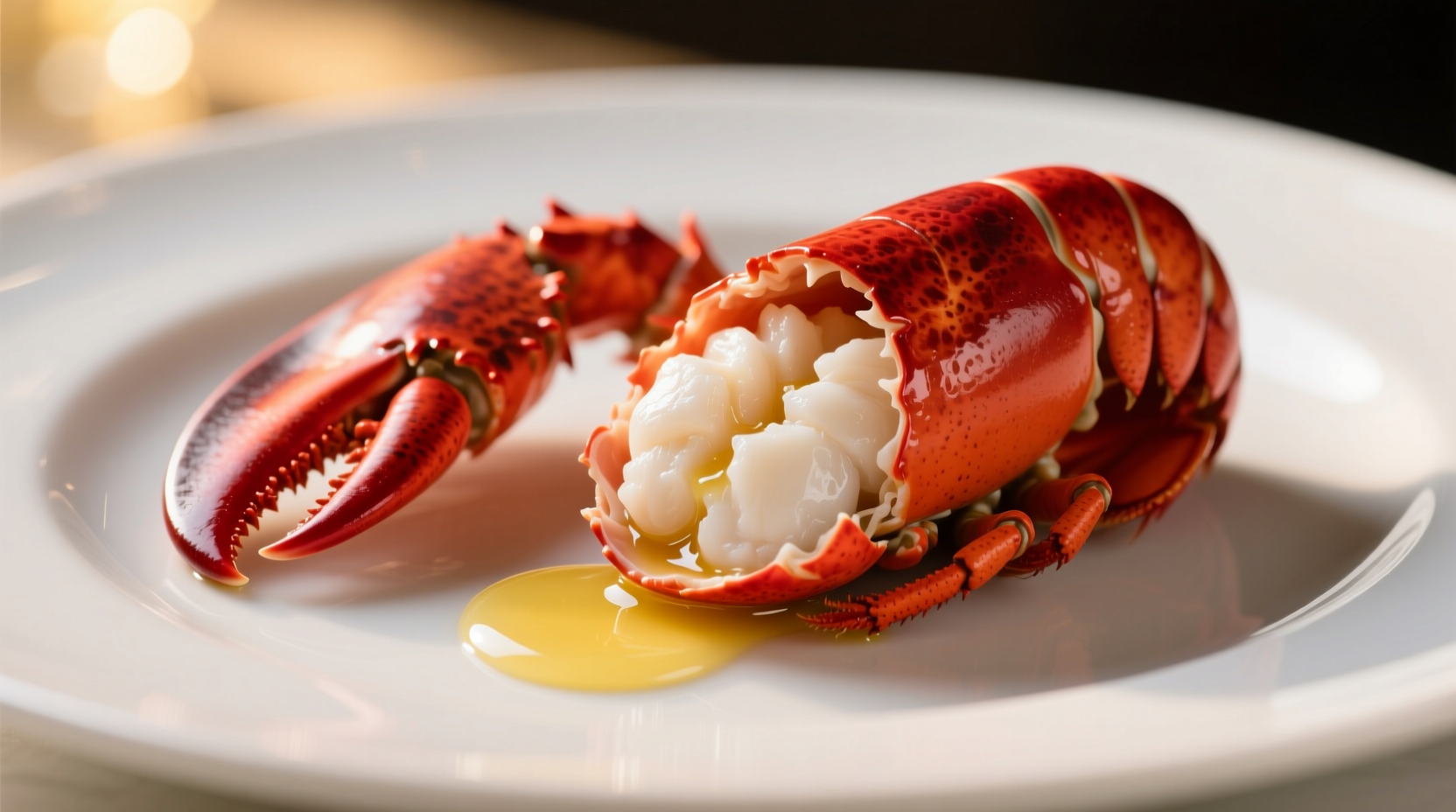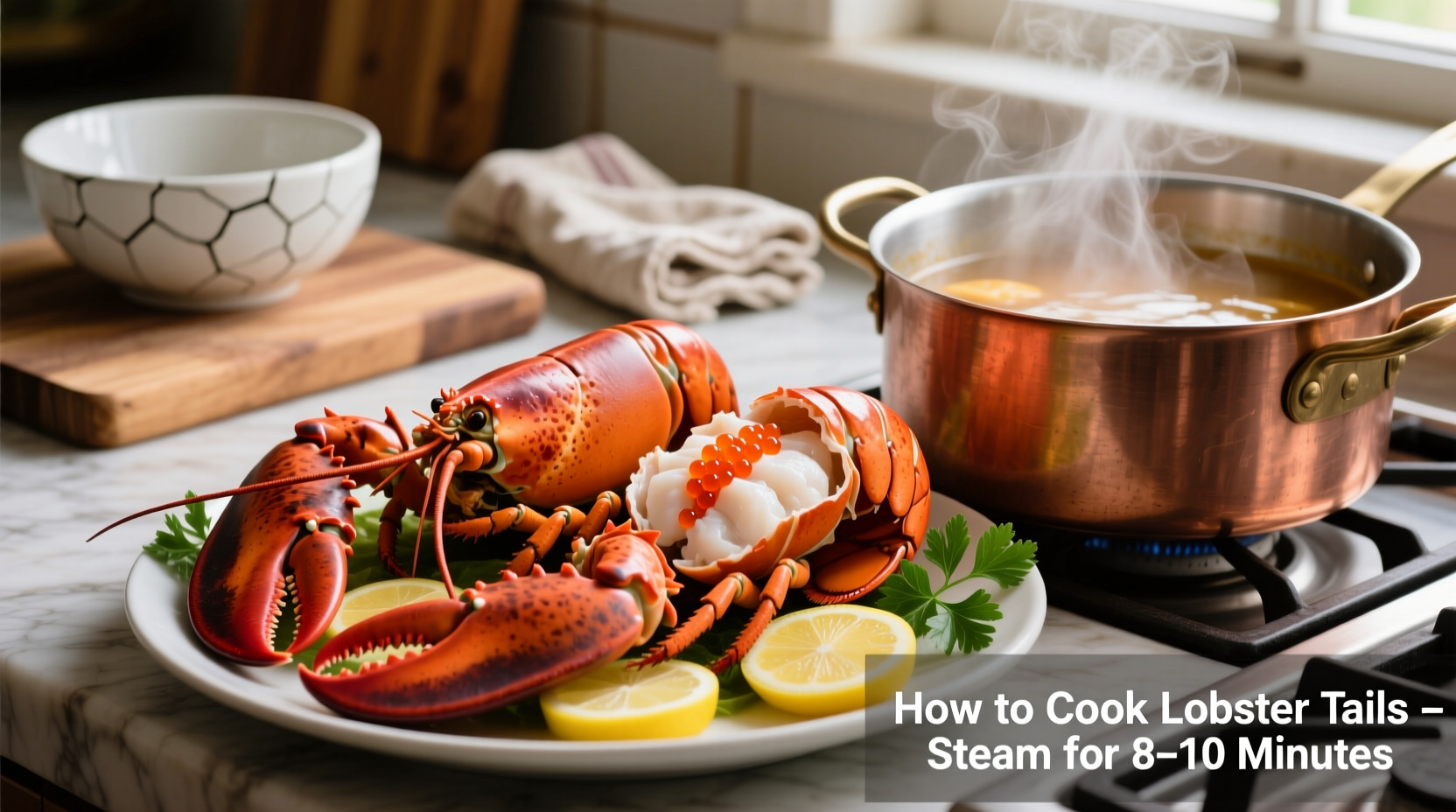The Foolproof Method for Perfectly Boiled Lobster Tails
Boiling lobster tails delivers tender, succulent meat with minimal effort. Unlike baking or grilling, boiling ensures even cooking without drying out the delicate flesh. This method works for both fresh and properly thawed frozen lobster tails, making it the most reliable technique for home cooks.
Why Boiling Outperforms Other Cooking Methods
While grilling gives dramatic presentation and baking offers hands-off convenience, boiling provides unmatched consistency for lobster tails. The water's even heat distribution prevents overcooding common with direct-heat methods. Professional seafood chefs prefer boiling when serving multiple tails simultaneously because it delivers uniform results without requiring constant attention.

Essential Preparation Steps
Proper preparation determines your success before the lobster even hits the water:
Selecting Quality Lobster Tails
Choose tails with firm, springy meat and a clean ocean scent. Avoid any with black spots or ammonia odor. Cold-water lobster tails (typically from Maine or Canada) offer superior sweetness and texture compared to warm-water varieties. For best results, purchase tails weighing 4-6 ounces each.
Thawing Frozen Tails Properly
If using frozen tails, thaw them in the refrigerator for 24 hours. Never thaw at room temperature or in warm water, which promotes bacterial growth. For emergency thawing, place sealed tails in cold running water for 30-45 minutes. Never cook frozen lobster tails directly—they'll become tough and unevenly cooked.
Required Equipment Checklist
- Large stockpot with tight-fitting lid
- Tongs or slotted spoon
- Sharp kitchen shears
- Instant-read thermometer
- Timer
Perfect Boiling Technique: Step-by-Step
Water Preparation (The Critical Foundation)
Use 3-4 quarts of water per pound of lobster tails. Add 1/4 cup of coarse sea salt per gallon of water—this concentration mimics ocean salinity for optimal flavor. Never add vinegar or lemon to the cooking water as commonly suggested; these acids toughen the meat. Bring the water to a full rolling boil before adding lobster.
| Lobster Tail Size | Water Temperature | Exact Cooking Time | Internal Temperature |
|---|---|---|---|
| 4-6 oz tails | 212°F (rolling boil) | 8 minutes | 135-140°F |
| 6-8 oz tails | 212°F (rolling boil) | 10 minutes | 135-140°F |
| 8-10 oz tails | 212°F (rolling boil) | 12 minutes | 135-140°F |
Adding Lobster to the Pot
Carefully place tails in the boiling water using tongs. For easier removal later, cut through the top shell with kitchen shears before cooking. This also allows seasoning to penetrate. Immediately reduce heat to maintain a gentle simmer—vigorous boiling makes meat tough. Cover the pot with a lid.
Monitoring Cooking Progress
Set your timer immediately after adding lobster. Check for doneness at the minimum time: shells should be bright red, and meat opaque white with no translucent areas. Insert an instant-read thermometer into the thickest part of the tail—135-140°F indicates perfect doneness. Overcooking by even 60 seconds makes lobster rubbery.
Post-Cooking Handling for Maximum Flavor
Remove tails immediately when done using tongs. Drain briefly in a colander, then place shell-side down on paper towels to absorb excess water. Never leave lobster sitting in the cooking water after timing completes.
Perfect Melted Butter Sauce
While lobster cooks, prepare classic drawn butter: melt 1/2 cup unsalted butter with 1 tablespoon lemon juice and 1 minced garlic clove over low heat. Keep warm until serving. For gourmet variation, add a pinch of smoked paprika or fresh herbs like tarragon.
Serving Recommendations
Serve immediately while hot. Present tails with shell-side up for dramatic presentation. Provide lobster crackers, picks, and plenty of napkins. Classic accompaniments include lemon wedges, fresh parsley, and crusty bread for soaking up butter. For complete meal pairing, serve with asparagus and a crisp Chardonnay.
Troubleshooting Common Boiling Problems
Overcooked Lobster
If your lobster turns out tough, you've exceeded the critical 135-140°F internal temperature. Salvage overcooked tails by slicing thinly and using in lobster rolls with generous mayonnaise. For future attempts, reduce cooking time by 1-2 minutes and check temperature early.
Undercooked Lobster
Translucent or gelatinous areas indicate undercooking. Return to simmering water for 1-2 minute increments until opaque. Never microwave undercooked lobster as it becomes rubbery. Prevent this by using an instant-read thermometer rather than relying solely on timing.
Shell Sticking to Meat
If meat sticks to the shell, you likely didn't cut through the top shell before cooking. For future batches, use kitchen shears to cut lengthwise through the center of the shell. This creates a natural separation point when cooked. To remove stuck meat from current batch, gently slide a butter knife between shell and meat.
When Boiling Isn't the Best Method
While boiling works perfectly for standard preparations, certain situations call for alternative approaches. When serving lobster tails as part of surf-and-turf with steak, broiling provides better presentation. For cold lobster salads, poaching in court-bouillon at 180°F preserves delicate texture better than boiling. Never boil already-cooked frozen lobster tails—these should be gently reheated instead.











 浙公网安备
33010002000092号
浙公网安备
33010002000092号 浙B2-20120091-4
浙B2-20120091-4